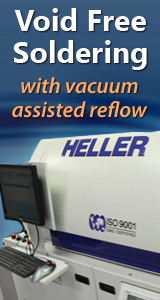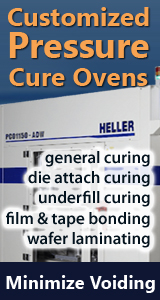Printed Circuit Board Assembly & PCB Design Forum
SMT electronics assembly manufacturing forum.
- SMTnet
- »
- Electronics Forum
- »
- wave soldering and solder bridge
wave soldering and solder bridge
Views: 12913
![]() Hi,
I have a lot of solder bridge in our wave soldering p...
- Dec 17, 2007
by
iv40
Hi,
I have a lot of solder bridge in our wave soldering p...
- Dec 17, 2007
by
iv40
![]()
![]()
![]() First of all, more info is needed. Solder shorts can be cau...
- Dec 17, 2007
by
Real Chunks
First of all, more info is needed. Solder shorts can be cau...
- Dec 17, 2007
by
Real Chunks
![]()
![]()
![]() I recently had the same problems, solder bridges on every th...
- Dec 17, 2007
by
mparker
I recently had the same problems, solder bridges on every th...
- Dec 17, 2007
by
mparker
![]()
![]()
![]() 5 Steps to Eliminate Bridges:
1. Establish (wave) Paralle...
- Dec 17, 2007
by
PeteC
5 Steps to Eliminate Bridges:
1. Establish (wave) Paralle...
- Dec 17, 2007
by
PeteC
![]()
![]()
![]() I made my own wave measuring device using KIC2000 system. K...
- Dec 17, 2007
by
Dirk Nuendyke
I made my own wave measuring device using KIC2000 system. K...
- Dec 17, 2007
by
Dirk Nuendyke
![]()
![]()
![]() This is funny. Poeple giving answers to a question that isn...
- Dec 17, 2007
by
Real Chunks
This is funny. Poeple giving answers to a question that isn...
- Dec 17, 2007
by
Real Chunks
![]()
![]()
![]() Blew chunks - thanx for thinking outside the box. Of course ...
- Dec 17, 2007
by
mparker
Blew chunks - thanx for thinking outside the box. Of course ...
- Dec 17, 2007
by
mparker
![]()
![]()
![]() Ha-ha-ha-ha-ha,me lad. Wave solder is like an onion, it's g...
- Dec 17, 2007
by
Chim Richalds
Ha-ha-ha-ha-ha,me lad. Wave solder is like an onion, it's g...
- Dec 17, 2007
by
Chim Richalds
![]()
![]()
![]() As someone with a LOT of experience with the "low cost" alte...
- Dec 17, 2007
by
Bruce Barton
As someone with a LOT of experience with the "low cost" alte...
- Dec 17, 2007
by
Bruce Barton
![]()
![]()
![]() Thanks bud. Merry Christmas and happy holidays to all.
...
- Dec 17, 2007
by
davef
Thanks bud. Merry Christmas and happy holidays to all.
...
- Dec 17, 2007
by
davef
![]()
- SMTnet
- »
- Electronics Forum
- »
- wave soldering and solder bridge







